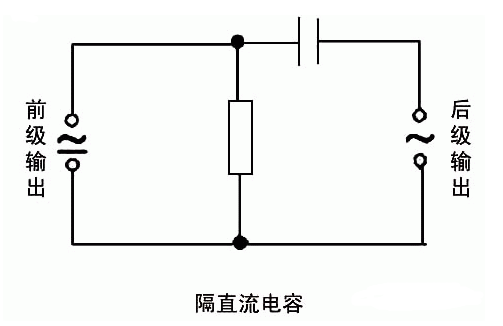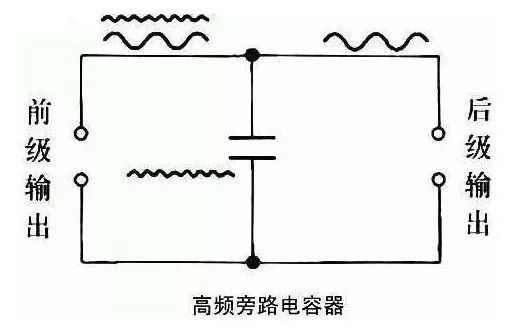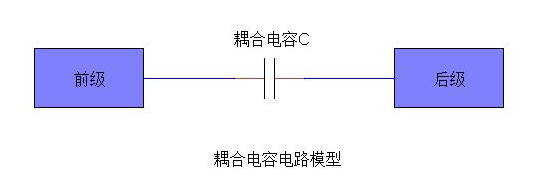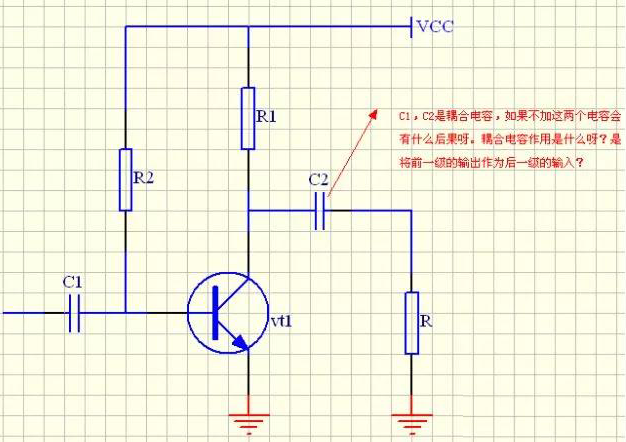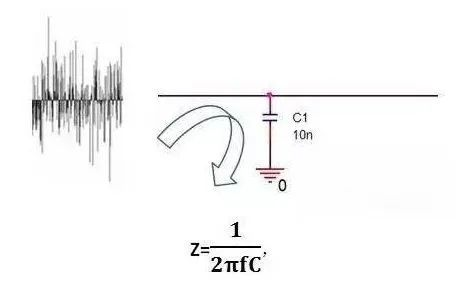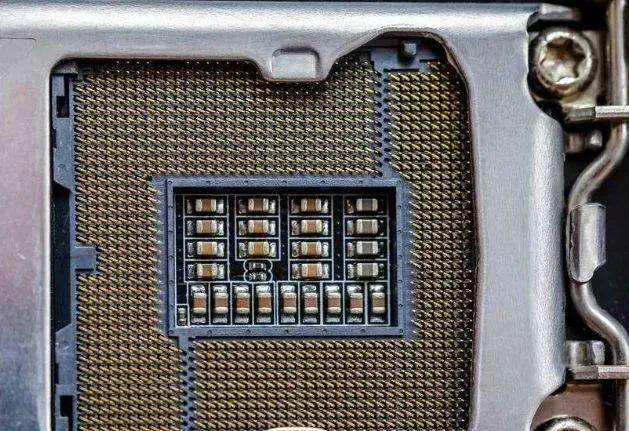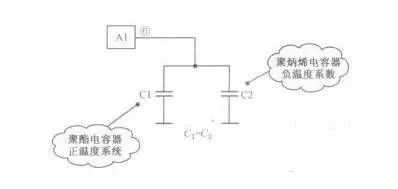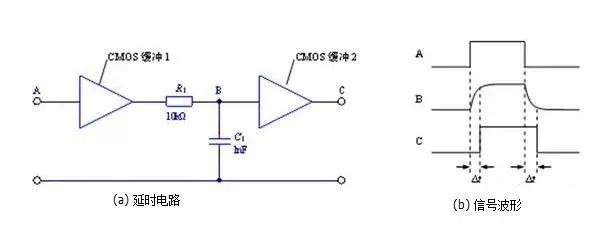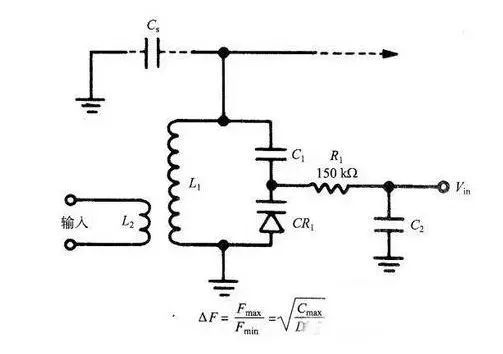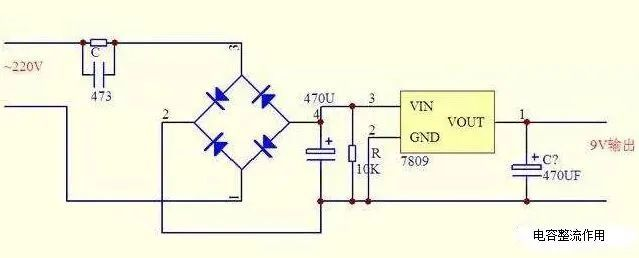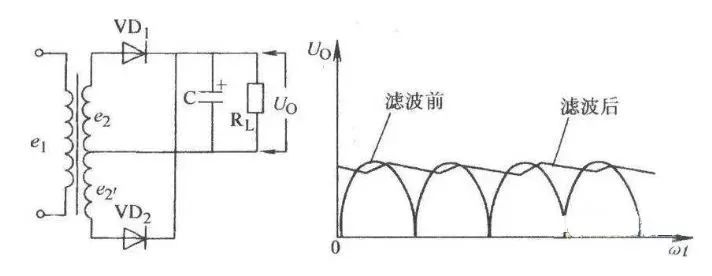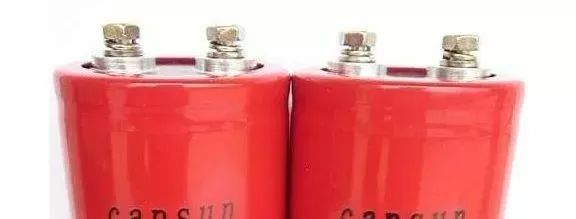Capacitor is the most commonly used device in circuit design, is one of the passive components, the active device is simply the need for energy (electrical) source of the device called active device, without energy (electrical) source of the device is passive device.
The role and use of capacitors are generally many kinds, such as: the role of bypass, decoupling, filtering, energy storage; In the completion of oscillation, synchronization and the role of time constant.
Dc isolation: The function is to prevent the DC through and let the AC through.
Bypass (decoupling) : Provides a low-impedance path for certain parallel components in an AC circuit.
Bypass capacitor: A bypass capacitor, also known as a decoupling capacitor, is an energy storage device that provides energy to a device. It uses the frequency impedance characteristics of the capacitor, the frequency characteristics of the ideal capacitor as the frequency increases, the impedance decreases, just like a pond, it can make the output voltage output uniform, reduce the load voltage fluctuation. The bypass capacitor should be as close as possible to the power supply pin and ground pin of the load device, which is the impedance requirement.
When drawing the PCB, pay special attention to the fact that only when it is close to a component can it suppress the ground potential elevation and noise caused by excessive voltage or other signal transmission. To put it bluntly, the AC component of the DC power supply is coupled to the power supply through the capacitor, which plays the role of purifying the DC power supply. C1 is the bypass capacitor in the following figure, and the drawing should be as close as possible to IC1.
Decoupling capacitor: The decoupling capacitor is the interference of the output signal as the filter object, the decoupling capacitor is equivalent to the battery, the use of its charge and discharge, so that the amplified signal will not be disturbed by the mutation of the current. Its capacity depends on the frequency of the signal and the degree of suppression of ripples, and the decoupling capacitor is to play a “battery” role to meet the changes in the drive circuit current and avoid coupling interference between each other.
The bypass capacitor is actually de-coupled, but the bypass capacitor generally refers to the high-frequency bypass, that is, to improve the high-frequency switching noise of a low-impedance release path. The high-frequency bypass capacitance is generally small, and the resonant frequency is generally 0.1F, 0.01F, etc. The capacity of the decoupling capacitor is generally large, which may be 10F or larger, depending on the distributed parameters in the circuit and the change in the drive current.
The difference between them: the bypass is to filter the interference in the input signal as the object, and the decoupling is to filter the interference in the output signal as the object to prevent the interference signal from returning to the power supply.
Coupling: Acts as a connection between two circuits, allowing AC signals to pass through and be transmitted to the next level circuit.
The capacitor is used as a coupling component in order to transmit the former signal to the latter stage, and to block the influence of the former direct current on the latter stage, so that the circuit debugging is simple and the performance is stable. If the AC signal amplification does not change without capacitor, but the working point at all levels needs to be redesigned, due to the influence of the front and rear stages, debugging the working point is very difficult, and it is almost impossible to achieve at multiple levels.
Filter: This is very important for the circuit, the capacitor behind the CPU is basically this role.
That is, the greater the frequency f, the smaller the impedance Z of the capacitor. When the low frequency, capacitance C because the impedance Z is relatively large, useful signals can pass smoothly; At high frequency, capacitor C is already very small due to impedance Z, which is equivalent to short-circuiting high-frequency noise to GND.
Filter action: ideal capacitance, the larger the capacitance, the smaller the impedance, the higher the frequency of passing. Electrolytic capacitors are generally more than 1uF, which has a large inductance component, so the impedance will be large after a high frequency. We often see that sometimes there is a large capacitance electrolytic capacitor in parallel with a small capacitor, in fact, a large capacitor through low frequency, small capacitance through high frequency, so as to fully filter out high and low frequencies. The higher the frequency of the capacitor, the greater the attenuation, the capacitor is like a pond, a few drops of water is not enough to cause a great change in it, that is to say, the voltage fluctuation is not a great time when the voltage can be buffered.
Figure C2 Temperature compensation: To improve the stability of the circuit by compensating for the effect of insufficient temperature adaptability of other components.
Analysis: Because the capacity of the timing capacitor determines the oscillation frequency of the line oscillator, the capacity of the timing capacitor is required to be very stable and does not change with the change of environmental humidity, so as to make the oscillation frequency of the line oscillator stable. Therefore, capacitors with positive and negative temperature coefficients are used in parallel to carry out temperature complementation. When the operating temperature rises, the capacity of C1 is increasing, while the capacity of C2 is decreasing. The total capacity of two capacitors in parallel is the sum of the capacities of two capacitors. Since one capacity is increasing while the other is decreasing, the total capacity is basically unchanged. Similarly, when the temperature is reduced, the capacity of one capacitor is reduced and the other is increased, and the total capacity is basically unchanged, which stabilizes the oscillation frequency and achieves the purpose of temperature compensation.
Timing: The capacitor is used in conjunction with the resistor to determine the time constant of the circuit.
When the input signal jumps from low to high, the RC circuit is input after buffering 1. The characteristic of capacitor charging makes the signal at point B not jump immediately with the input signal, but has a process of gradually increasing. When large enough, the buffer 2 flips, resulting in a delayed jump from low to high at the output.
Time constant: Taking the common RC series integrated circuit as an example, when the input signal voltage is applied to the input end, the voltage on the capacitor gradually rises. The charging current decreases with the rise of the voltage, the resistor R and the capacitor C are connected in series to the input signal VI, and the output signal V0 from the capacitor C, when the RC (τ) value and the input square wave width tW meet: τ “tW”, this circuit is called an integrated circuit.
Tuning: Systematic tuning of frequency-dependent circuits, such as cell phones, radios, and television sets.
Because the resonant frequency of an IC tuned oscillating circuit is a function of IC, we find that the ratio of the maximum to minimum resonant frequency of the oscillating circuit varies with the square root of the capacitance ratio. The capacitance ratio here refers to the ratio of the capacitance when the reverse bias voltage is the lowest to the capacitance when the reverse bias voltage is the highest. Therefore, the tuning characteristic curve of the circuit (bias-resonant frequency) is basically a parabola.
Rectifier: Turning on or off a semi-closed conductor switch element at a predetermined time.
Energy storage: Storing electrical energy for release when necessary. Such as camera flash, heating equipment, etc.
In general, electrolytic capacitors will have the role of energy storage, for special energy storage capacitors, the mechanism of capacitive energy storage is double electric layer capacitors and Faraday capacitors. Its main form is supercapacitor energy storage, in which supercapacitors are capacitors using the principle of double electric layers.
When the applied voltage is applied to the two plates of the supercapacitor, the positive electrode of the plate stores the positive charge, and the negative plate stores the negative charge, as in ordinary capacitors. Under the electric field generated by the charge on the two plates of the supercapacitor, the opposite charge is formed on the interface between the electrolyte and the electrode to balance the internal electric field of the electrolyte.
This positive charge and negative charge are arranged in opposite positions on the contact surface between two different phases with a very short gap between positive and negative charges, and this charge distribution layer is called the double electric layer, so the electric capacity is very large.
Post time: Aug-15-2023


